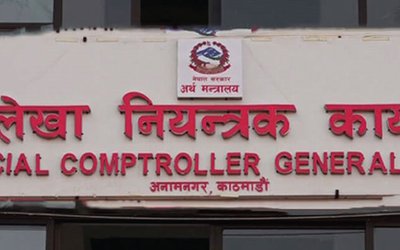
Remittance inflows that account for the largest share of foreign exchange earnings reach their peak during the festivals, mainly Dashain. This surge buttresses the dwindling economy a bit. According to the Economic Survey 2014, 56% of the Nepalese households receive remittance, accounting for one third of the Gross Domestic Product (GDP). Experts have attributed the appreciation of US dollars against the Indian currency as the main reason behind the growth in remittance share. The remittance income is projected to have increased by 33% in Dashain, owing to the growing number of migrant workers. In the household level, remittance has helped reduce poverty and increase access to better health and education facilities while at the macro level it has helped brining in foreign exchange and creating a room to stabilize the Balance of Payment (BOP).
Despite being one of the greatest shareholders of global remittance, as things stand, Nepal has not been able to mobilize the resources in the productive sectors. In addition, over 80% of the income received, specifically in the festivities, is spent on daily consumption, creating little space for building capital. Some 70% of the remittance is spent for consumption at the micro level in Nepal, states the World Bank. Remittance spending in the household level is ad-hoc with a large share diverted to pay loans and interest to moneylenders. The absence of financial institutions has compelled the workers to pay interest as high as 40% per annum. To add on, the labour migration cost in Nepal remains expensive, forcing these workers to escalate their debts.
Remittance has definitely increased the aggregate consumption, pushing up the national demand. But what needs to be understood is the fact that it is being spent mostly on durables. The expended durables are mostly the imported goods, not manufactured in Nepal. The political and investment climate is the foremost reason behind this attrition of manufacturing potential. The possibility to maintain the balance of payment solely relying on remittance cannot be perpetual. Further remittance inflow may not grow at the same rate as the migrants opt for construction sectors that offer employment only for the short term.
While many might question on how the ‘productive’ use of remittance can be made, studies have shown that it can help in many areas including promoting gender equity. In a patriarchal society where women have their minimal say, remittance could be mobilized effectively to broaden the role of women in managing the household. A favorable environment for skill development and productive investment could be promoted with a growing role of women in economic decision-making. This way, these women who have to seek their men's consent on most other activities, will at least get to manage the household affairs on their own, helping promote gender equality to some extent.
As remittance today is just spent on consumption, more remittance in the future will boost consumption further. This could have been used in saving and investment. When remittance is saved in financial institutions, it widens the availability of credit and materializes investment that generates benefits in the long run. Furthermore, with emphasis on financial literacy, the people can also be encouraged to save in the long run and invest in productive sectors. To make this situation viable, the government first needs to develop a conducive business environment for it. Remittances could be a source of generating employment opportunities at the local level but the government should make provisions to ensure that this hard-earned money are fully secured.Measures to foster holdings of saving in financial assets in the country rather than holding it abroad need to be promoted.
Remittance can play a crucial role if Nepal harnesses its potential benefits. In countries where migration is rampant, migrant communities have maintained ties with the home country by forming informal clubs such as Home Town Association (HTAs). Take for example Mexico, where these clubs have been very successful in boosting the economy. Among the many initiatives these clubs have taken, some of them include opening up of schools, building community halls, health posts and clinics. The government here should consider promotion of similar associations and entice participation in community development.

Shalinta Sigdel
Sigdel is a Finance graduate from Stratford University
- Pokhara International Airport and its anticipated gains to the economy
- Apr 21, 2016
- Nepali Constitution and Economy - All’s Not Well
- Sep 26, 2015
- Economic Costs Of Kathmandu Airport Fiasco
- Mar 23, 2015
- Implications Of Fuel Price Fall
- Mar 06, 2015
- Lingering Statute Process: Economic Implications
- Jan 30, 2015
















